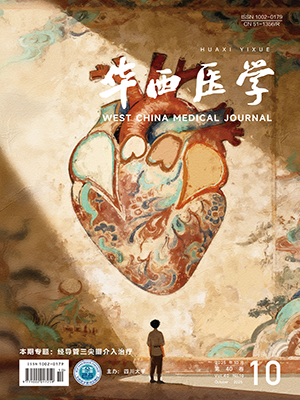| 1. |
Eubanks JD. Cervical radiculopathy: nonoperative management of neck pain and radicular symptoms. Am Fam Physician, 2010, 81(1): 33-40.
|
| 2. |
神经根型颈椎病诊疗规范化的专家共识. 中华外科杂志, 2015, 53(11): 812-814.
|
| 3. |
Blanpied PR, Gross AR, Elliott JM, et al. Neck pain: revision 2017. J Orthop Sports Phys Ther, 2017, 47(7): A1-A83.
|
| 4. |
Health Quality Ontario. Structured education and neuromuscular exercise program for hip and/or knee osteoarthritis: a health technology assessment. Ont Health Technol Assess Ser, 2018, 18(8): 1-110.
|
| 5. |
Özel M, Kaya Ciddi P. The effectiveness of telerehabilitation-based structured exercise therapy for chronic nonspecific neck pain: a randomized controlled trial. J Telemed Telecare, 2022: 1357633X221095782.
|
| 6. |
Dedering Å, Peolsson A, Cleland JA, et al. The effects of neck-specific training versus prescribed physical activity on pain and disability in patients with cervical radiculopathy: a randomized controlled trial. Arch Phys Med Rehabil, 2018, 99(12): 2447-2456.
|
| 7. |
Lakens D. Calculating and reporting effect sizes to facilitate cumulative science: a practical primer for t-tests and ANOVAs. Front Psychol, 2013, 4: 863.
|
| 8. |
Shacklock M. Neurodynamics. Physiother, 1995, 81(1): 9-16.
|
| 9. |
Li Y, Tse MYM. An online pain education program for working adults: pilot randomized controlled trial. J Med Internet Res, 2020, 22(1): e15071.
|
| 10. |
Carlsson AM. Assessment of chronic pain. I. Aspects of the reliability and validity of the visual analogue scale. Pain, 1983, 16(1): 87-101.
|
| 11. |
Vernon H, Mior S. The Neck Disability Index: a study of reliability and validity. J Manipulative Physiol Ther, 1991, 14(7): 409-415.
|
| 12. |
Buchholz I, Janssen MF, Kohlmann T, et al. A systematic review of studies comparing the measurement properties of the three-level and five-level versions of the EQ-5D. Pharmacoeconomics, 2018, 36(6): 645-661.
|
| 13. |
Dedering A, Börjesson T. Assessing fear-avoidance beliefs in patients with cervical radiculopathy. Physiother Res Int, 2013, 18(4): 193-202.
|
| 14. |
Castro MM, Quarantini L, Batista-Neves S, et al. Validity of the hospital anxiety and depression scale in patients with chronic pain. Rev Bras Anestesiol, 2006, 56(5): 470-477.
|
| 15. |
Yang J, Huang H, Shi J, et al. Qihuang needle therapy in senile cervical spondylotic radiculopathy. Front Aging Neurosci, 2023, 15: 1140531.
|
| 16. |
Cheng CH, Lin KH, Wang JL. Co-contraction of cervical muscles during sagittal and coronal neck motions at different movement speeds. Eur J Appl Physiol, 2008, 103(6): 647-654.
|
| 17. |
Lindstrøm R, Schomacher J, Farina D, et al. Association between neck muscle coactivation, pain, and strength in women with neck pain. Man Ther, 2011, 16(1): 80-86.
|
| 18. |
Lee PJ, Rogers EL, Granata KP. Active trunk stiffness increases with co-contraction. J Electromyogr Kinesiol, 2006, 16(1): 51-57.
|
| 19. |
Choi H. Quantitative assessment of co-contraction in cervical musculature. Med Eng Phys, 2003, 25(2): 133-140.
|
| 20. |
Halvorsen M, Falla D, Gizzi L, et al. Short- and long-term effects of exercise on neck muscle function in cervical radiculopathy: a randomized clinical trial. J Rehabil Med, 2016, 48(8): 696-704.
|
| 21. |
Booth J, Moseley GL, Schiltenwolf M, et al. Exercise for chronic musculoskeletal pain: a biopsychosocial approach. Musculoskeletal care, 2017, 15(4): 413-421.
|
| 22. |
Lima LV, Abner TSS, Sluka KA. Does exercise increase or decrease pain? Central mechanisms underlying these two phenomena. J Physiol, 2017, 595(13): 4141-4150.
|
| 23. |
Stolzman S, Bement MH. Does exercise decrease pain via conditioned pain modulation in adolescents?. Pediatr Phys Ther, 2016, 28(4): 470-473.
|




